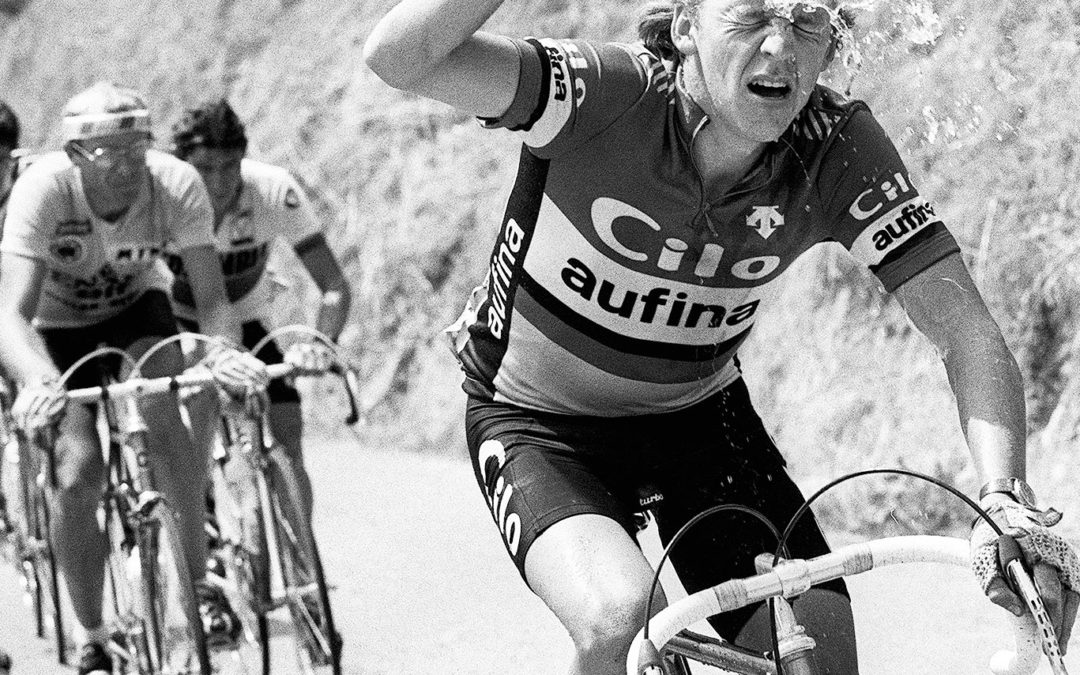Riding in the heat can be demanding and having a strategy on race day can make all the difference. Luckily there is some commonsense sport science steps and procedures that can make the world of differences.
Pre-Cooling
Often in the Tour de France (especially due to the 2022 heat wave) and more regularly in the Tour Down Under, heat can play a major part in a stage. A valid tactic then, is to pre-cool. This is likely more useful in short hard efforts such as TTs.
On a hot day, and especially in time trials in the heat, we see some of the pros wearing cooling vests during their warm ups. This works by keeping the core temperature from rising too much while warming up and therefore keeping it lower during the TT (since the core started from a lower temperature).
In a review article looking at pre-cooling studies, Wegman et al 2012 found that pre-cooling works better the hotter it is and the most effective methods (in order) are: cold drinks (15%), cool room (10.7%), packs (5.6%), vests (4.8%) and water application (1.2%). The effect is greater in fitter individuals (read that higher VO2max). Putting this into useful numbers, on average endurance athletes improved performance by 3.7% when pre-cooled for a TT.
Link to the Wegman et al 2012 study
Cooling On The Bike
If we look at the above methods, some of them can be applied while riding:
Cold Drinks
Dropping your drinks in the freezer the night before is one option. The trick is thawing them enough to drink during the race!
Ice Packs
Often seen as a stocking filled with ice stuffed down the back of the neck of the jersey. Treat this method with caution though as it just reduces perceived thermal strain allowing you to maintain your effort while core temperature rises. See: Cooling the Neck Region During Exercise in the Heat
Water Application
Getting squirted by fans or dousing with cold water are the two likely scenarios here. The best example I’ve seen of this is the infamous ride by Floyd Landis when he destroyed the field on Stage 17 of the 2006 Tour. During the epic ride he used dozens of bottles to keep cool both drinking and pouring over his head/back.
One point to note is that whilst riding, the air moving over the skin vastly improves evaporation of sweat (or applied water) and therefore cooling (evaporation of sweat and not the sweat itself is what cools). So unzipping the jersey can help even more here. Think Air flow over wet skin.
The more humidity there is will mean a decrease in the amount of evaporation, so cooling by this method in high humidity is less effective.
Clothing
Dressing to keep cool can be an overlooked element. Choose clothing that is light weight and lets the air cool the skin (and evaporate sweat off the skin). A well ventilated helmet for example can help to cool your head (a key place to loose heat).
Menthol Mouth Rinse
Ok, this may sound weird, but there is increasing evidence showing regular mouth rinses with a menthol solution can improve performance in the heat. See: Oral L-menthol reduces thermal sensation, increases work-rate and extends time to exhaustion, in the heat at a fixed rating of perceived exertion
Hydration – Cooling From Within
While we are mentioning this last, probably the first thing to look at when racing in the heat is adequate hydration. We reviewed this in our recovery series, but some points to consider are:
- During the workout you can generally absorb about 1g of carbohydrate per kilo of body weight. There is some recent research (by Jeukendrup) that suggests this figure can be improved with different combinations (glucose/fructose, caffeine/carbohydrate, maltodextrin/fructose etc).
- Consider a sports drink with a 1:4 ratio of protein to carbohydrate. Research suggests that it increases glycogen synthesis, decreases muscle damage and aids recovery. It may also help endurance during your ride, but this is inconclusive.
- Aim to consume between 500-800ml/hr of a 6-8% carbohydrate drink, depending on heat and sweat loss (up to a litre in extreme conditions). This will mean that you will need to consume an additional 20-40g of carbohydrate an hour (as well as your drink) to make up to 1g/kg/hr.
- Drinks should contain between 0.3-1.0g/L of sodium also. This is highly individual specific and depends on sweat rate and sodium concentration in the sweat.
- It is also important to test and trial any food in training that you are planning to use in races. Palatability is also an important consideration.
Preparation
Training to race in the heat in the weeks before an event you know will be hot is a strategy we will look to in a future post, but short indoor sessions at the same temperature and humidity or hot baths/saunas can all adapt the body better in the lead up.
Conclusion
The important thing here is to have a plan you can employ when the racing gets hot. Cold drinks before and during the race are the quickest and most effective strategy, so maybe investing in a slushy machine could be money well spent! Some pro teams do this already, turning their sports drinks into a super cooled treat! Be sure to include other options too as a well rounded approach will pay dividends.



